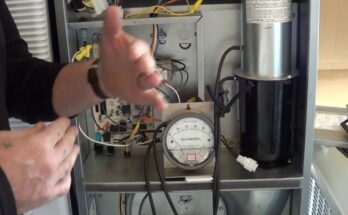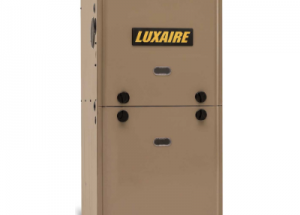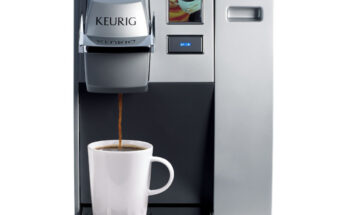Bosch ice maker issues often stem from water supply problems or clogged filters. Ensure the water line is unobstructed and clean the filter.
Bosch ice makers are known for their reliability and efficiency, but like any appliance, they can encounter issues. Common problems include a lack of ice production, unusual noises, or ice cubes being too small or misshapen. Addressing these issues promptly can extend the lifespan of your appliance and ensure a steady supply of ice.
Proper maintenance and understanding the common troubleshooting steps can save time and money. This guide will help you identify and resolve frequent Bosch ice maker problems, ensuring optimal performance. Regular checks and timely interventions are key to keeping your Bosch ice maker running smoothly.
Common Issues
Dealing with a Bosch ice maker can be tricky. Knowing common issues can save time. This guide helps identify and solve frequent problems.
Ice Maker Not Working
Is your Bosch ice maker not working? Here are possible reasons:
- Power Supply: Check if the power cord is plugged in.
- Water Supply: Ensure the water line is connected and open.
- Ice Bin: The bin might be full or misaligned.
- Temperature Setting: Verify the freezer temperature is set correctly.
Follow these steps to troubleshoot:
- Unplug the ice maker for safety.
- Inspect the power cord for any damage.
- Check the water line for kinks or leaks.
- Empty and reposition the ice bin.
- Set the freezer temperature between 0°F and 5°F.
Ice Production Slow
Is your Bosch ice maker producing ice slowly? Several factors could be responsible:
| Issue | Solution |
|---|---|
| Dirty Water Filter | Replace the water filter every 6 months. |
| Low Water Pressure | Ensure water pressure is at least 20 psi. |
| Freezer Temperature | Lower the freezer temperature to speed up ice production. |
| Frequent Door Opening | Limit opening the freezer door to maintain temperature. |
Follow these tips to improve ice production:
- Check and replace the water filter regularly.
- Monitor and adjust water pressure if needed.
- Set the freezer to an optimal temperature.
- Minimize opening the freezer door frequently.
Initial Checks
Is your Bosch Ice Maker not working? Before calling a technician, perform these initial checks. These steps could save you time and money.
Power Supply
First, check if the ice maker is getting power. Ensure the unit is plugged in properly. Look for any signs of damage on the power cord.
- Verify that the outlet is working by plugging in another device.
- Reset the circuit breaker if it has tripped.
- Check for any blown fuses.
If the unit still doesn’t power on, it might need a professional inspection.
Water Supply
Next, confirm that the ice maker is receiving water. Check the water supply line for any kinks or blockages.
| Step | Description |
|---|---|
| 1 | Ensure the water valve is turned on. |
| 2 | Inspect the water filter. Replace it if clogged. |
| 3 | Examine the water inlet valve for leaks or damage. |
If the water supply is fine and the ice maker still doesn’t work, further troubleshooting may be needed.
Resetting The Ice Maker
Experiencing issues with your Bosch Ice Maker? Resetting the ice maker can solve many common problems. This guide will walk you through the process, ensuring your ice maker is back to working efficiently.
Reset Button Location
First, locate the reset button on your Bosch Ice Maker. It is usually found behind the ice tray or near the control panel.
Refer to your ice maker’s manual for precise location details. Knowing the exact spot saves time and effort.
Step-by-step Reset
- Ensure the ice maker is plugged in and turned on.
- Remove the ice tray carefully to access the reset button.
- Press and hold the reset button for 10 seconds.
- Release the button and wait for the ice maker to cycle.
- Replace the ice tray and check for functionality.
If the ice maker still doesn’t work, repeat the process. Sometimes, a second reset is necessary.
Resetting your Bosch Ice Maker is simple. Follow these steps to ensure smooth operation. Enjoy ice without interruptions.

Credit: www.youtube.com
Cleaning And Maintenance
Proper cleaning and maintenance of your Bosch Ice Maker are essential for its longevity. Regular upkeep ensures it performs efficiently and produces clean, safe ice. Below are the steps to clean and maintain your Bosch Ice Maker.
Cleaning The Ice Maker
Follow these steps to clean the ice maker:
- Turn off and unplug the ice maker.
- Remove the ice bin and discard any remaining ice.
- Use a soft cloth and warm, soapy water to clean the ice bin.
- Wipe down the interior surfaces with a mild cleaning solution.
- Rinse all parts with clean water and dry them thoroughly.
- Reassemble the ice maker and plug it back in.
Cleaning the ice maker every three months is recommended.
Descaling Process
Descaling the ice maker removes mineral deposits that can affect performance. Follow these steps to descale your Bosch Ice Maker:
- Turn off and unplug the ice maker.
- Remove and empty the ice bin.
- Prepare a descaling solution using a mixture of water and descaling agent.
- Pour the solution into the water reservoir.
- Run the ice maker to allow the solution to circulate.
- Discard any ice made during this process.
- Rinse the water reservoir and ice bin thoroughly with clean water.
- Run the ice maker with fresh water to flush out any remaining descaling solution.
Descale the ice maker every six months for optimal performance.
| Task | Frequency |
|---|---|
| Clean Ice Bin | Every 3 Months |
| Wipe Interior | Every 3 Months |
| Descale Ice Maker | Every 6 Months |
Inspecting Components
Inspecting components is crucial for Bosch ice maker troubleshooting. Identifying and addressing issues in specific parts can ensure efficient functioning. Here, we’ll focus on the water filter and ice tray.
Water Filter
The water filter is vital for clean ice production. Over time, it can get clogged or dirty. Inspecting the water filter involves:
- Locating the filter in your Bosch ice maker.
- Removing the filter carefully.
- Checking for any visible dirt or debris.
If the filter appears dirty, consider replacing it. A clean filter ensures the ice maker has a good water supply. This leads to better ice quality.
Ice Tray
The ice tray is where the ice forms and gets stored. Issues in the ice tray can affect ice production. Here’s how to inspect the ice tray:
- Open the ice maker and locate the ice tray.
- Check for any ice buildup or blockages.
- Ensure the tray is seated properly.
If there is ice buildup, defrost the tray. Ensure the tray is clean and free from obstructions. A properly maintained tray helps in smooth ice production.
Temperature Settings
Understanding the temperature settings of your Bosch ice maker is crucial. It helps you maintain optimal ice production and quality. Incorrect settings can lead to issues like slow ice production or no ice at all. This section covers how to achieve the best results with the right temperature settings.
Optimal Freezer Temperature
The optimal freezer temperature for a Bosch ice maker is -18°C (0°F). This temperature ensures ice forms quickly and efficiently. If your freezer is too warm, ice may not freeze properly. If it’s too cold, the ice may become too hard and brittle.
| Temperature (°C) | Effect on Ice |
|---|---|
| -18°C | Optimal ice formation |
| -10°C | Slow ice formation |
| -25°C | Ice becomes too hard |
Adjusting Settings
To adjust your freezer’s temperature, locate the control panel inside the unit. Most Bosch models have a digital display or dial.
- Open the freezer door.
- Find the temperature control panel.
- Use the up or down arrows to set the temperature to -18°C.
After adjusting, wait 24 hours for the new temperature to stabilize. Check the ice maker’s performance after this period.
If your ice maker still has issues, consult the user manual. It may offer specific troubleshooting tips for your model.
Error Codes
Understanding the error codes on your Bosch ice maker can help you fix issues quickly. These codes provide insights into specific problems, making troubleshooting easier. Below, we discuss common error codes and how to troubleshoot them.
Common Error Codes
Here are some of the most common error codes you might encounter:
| Error Code | Description |
|---|---|
| E01 | Water supply issue |
| E02 | Ice maker not receiving power |
| E03 | Ice bin full |
| E04 | Sensor malfunction |
Troubleshooting Errors
Follow these steps to troubleshoot and fix the issues:
- E01 – Water Supply Issue:
- Check the water line connection.
- Ensure the water valve is open.
- E02 – Power Issue:
- Verify the power cord is plugged in.
- Check the circuit breaker.
- E03 – Ice Bin Full:
- Empty the ice bin.
- Reset the ice maker.
- E04 – Sensor Malfunction:
- Inspect the sensor for damage.
- Clean the sensor area.

Credit: www.partselect.com
When To Call A Professional
Troubleshooting your Bosch ice maker can sometimes be a straightforward task. However, certain issues may require professional intervention. Knowing when to call a professional can save time and prevent further damage.
Signs You Need Help
- Strange Noises: If the ice maker makes unusual sounds, this could indicate a serious problem.
- No Ice Production: If the ice maker stops producing ice completely, it might need professional attention.
- Leaking Water: Water leakage from the ice maker can signify broken parts or connection issues.
- Ice Quality Issues: If the ice is cloudy or odd-tasting, it may be time for expert help.
- Frequent Cycling: If the machine cycles on and off frequently, it could be a sign of a malfunction.
Choosing A Repair Service
When selecting a repair service for your Bosch ice maker, consider these factors:
- Experience: Choose technicians with experience in Bosch appliances.
- Certifications: Ensure the repair service has certified professionals.
- Reviews: Look for services with positive customer reviews.
- Warranty: Check if the repair service offers a warranty on their work.
- Availability: Select a service that can schedule repairs promptly.
| Sign | Possible Issue |
|---|---|
| Strange Noises | Internal component failure |
| No Ice Production | Blocked water line or malfunctioning motor |
| Leaking Water | Broken seals or connections |
| Ice Quality Issues | Filter problems or contamination |
| Frequent Cycling | Thermostat issues or electrical faults |

Credit: avivservicetoday.com
Frequently Asked Questions
Why Is My Bosch Ice Maker Not Making Ice?
Your Bosch ice maker may not make ice due to a clogged water filter, faulty inlet valve, or temperature issues. Check these components.
How Do You Reset A Bosch Ice Maker?
To reset a Bosch ice maker, turn off the appliance. Wait 5 minutes, then turn it back on. Check the user manual for specific instructions.
How Do I Get My Bosch Freezer To Make Ice?
To get your Bosch freezer to make ice, ensure the ice maker is switched on. Connect the water supply properly. Adjust the freezer temperature to the recommended setting. Check and clear any blockages in the ice maker. Refer to the user manual for detailed instructions.
Why Is The Ice Maker Light Blinking On My Bosch Refrigerator?
The blinking light indicates a possible issue with the ice maker. Check the water supply or reset the ice maker.
Conclusion
Troubleshooting your Bosch ice maker can be simple with the right guidance. Regular maintenance prevents common issues. Always consult the manual for specific instructions. For persistent problems, professional help ensures your appliance runs smoothly. Your Bosch ice maker can provide reliable ice production for years with proper care.



